Astro Session - October 5, 2017
NGC 6888 - Crescent Nebula in Ha (4 x 1200 second subs + 15 dark frames stacked in DSS). I continued my hydrogen alpha campaign tonight, with a couple more targets, including the Crescent. My goal over the next month or two is to continue capturing these nebulae in O3 and S2, and use those results with these Ha shots to produce color images. I may also test out some Ha+RGB image processing on a couple of the brighter ones like IC 1369a, the Elephant Trunk Nebula.
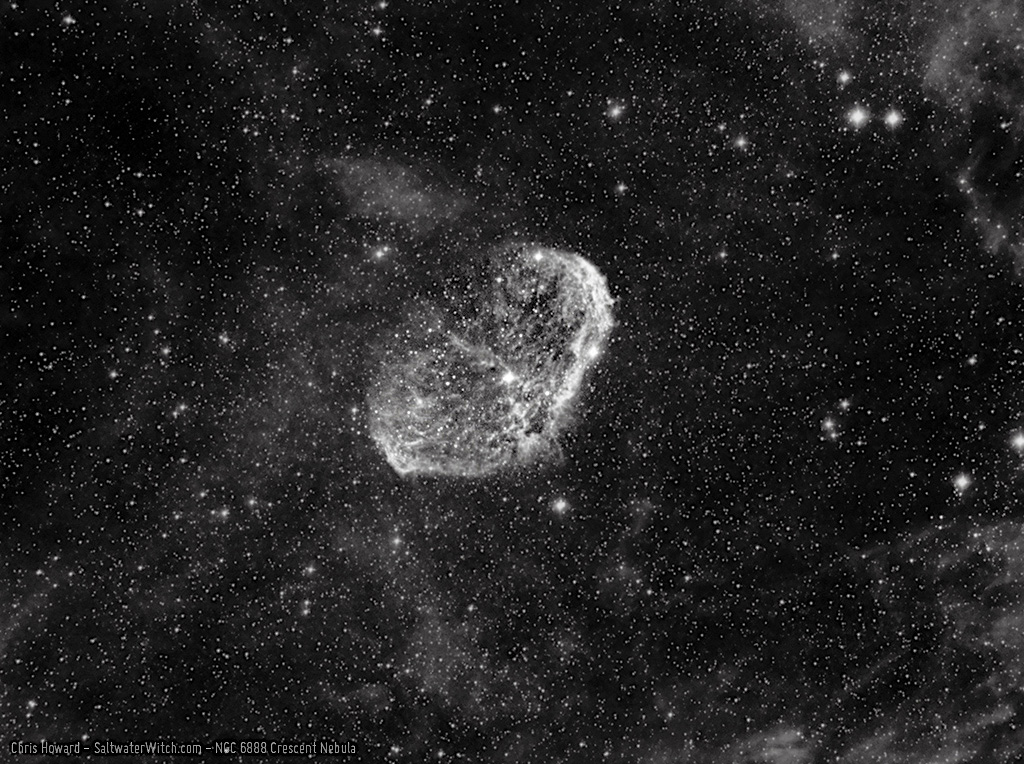
Posted October 5, 2017
Astro Session - October 5, 2017
I finally made some time to process one of the image sets I shot on October 2, and here's one result: narrowband of the central region of the emission nebula IC 1805, the Heart Nebula, which is only 7500 lightyears away in the constellation Cassiopeia. (It's almost in our backyard!) I used the "Hubble Palette", mapping the separate hydrogen alpha, oxygen, and sulfur image channels to RGB channels (SII = Red, Ha = Green, OIII = Blue) in the final. (subframe info: 4 x 1200 second Ha, 4 x 600 sec OIII & SII with 2x2 binning, Atik414Ex mono CCD, William Optics GT-81). I'm not entirely happy with this one, but good enough to post.
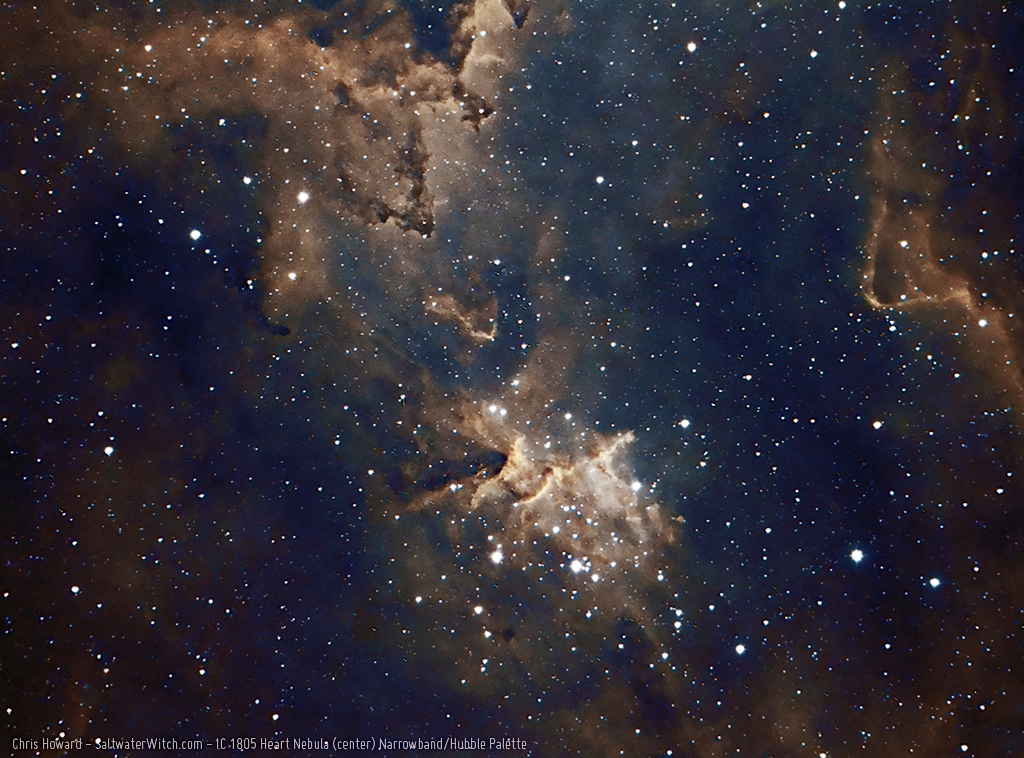
Posted October 5, 2017
Astro Session - October 4, 2017
Astrophotography with a full moon! I switched to narrowband imaging a few days ago, which has the advantage of limiting the light to a very narrow range, and not really being affected by the light of the sun reflected off the big smiling face of our moon. The requirements are far stricter than color or LRGB imaging in terms of exposure times (10 - 30 minute exposures are typical), which in turn require far tighter alignment for the mount and guiding system. I have three narrowband filters--Ha (hydrogen alpha) OIII (oxygen) and SII (sulfur), all with 6nm bandpass. For these images below I'm only imaging with the Ha filter and the Atik 414EX monochrome CCD camera. Image info: top-left: IC 1848 Soul Nebula (the center portion), bottom-left: IC 1369a Elephant Trunk Nebula, right: NGC 281 Pacman Nebula. 4 x 20 minute (1200 second) subs stacked in DSS.
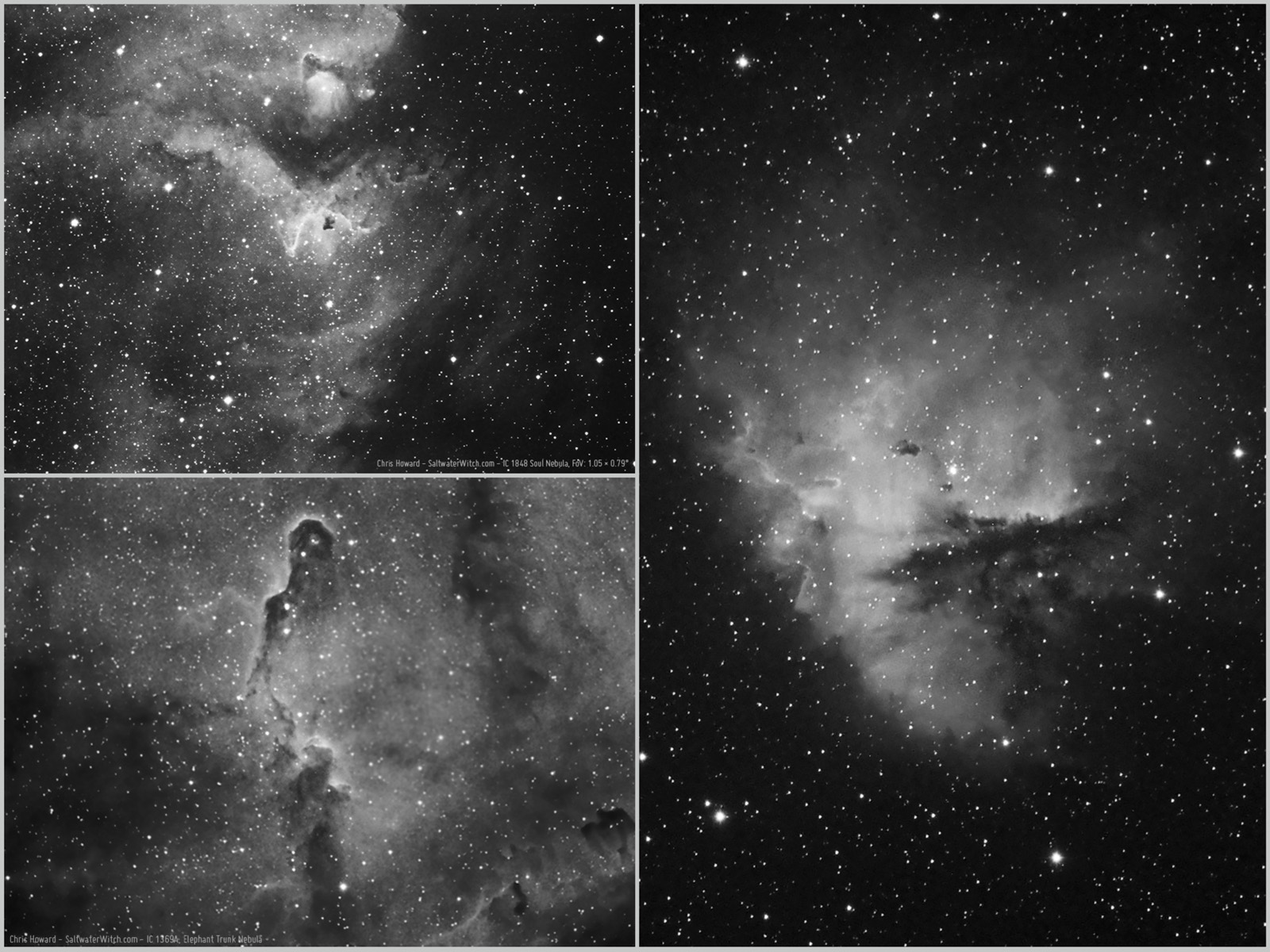
Posted October 4, 2017
Astro Session - October 2, 2017
I love this early autumn weather! Here's a 20 minute hydrogen alpha exposure/sub of IC 1805, the Heart Nebula, a diffuse nebula in Cassiopeia. FoV: 1.05 × 0.79° (William Optics GT-81, Atik 414Ex CCD, ZWO ASI120MM guide camera with WO 50mm guide scope, Astronomik Ha 6nm filter).
I will post my actual setup for this one soon--mainly because I want to lock down my portable gear for reference when setting up in the field. What amazed me tonight was the ability to get pretty clean 20-minute subframes with the new iOptron CEM25P mount, leveled, pointed toward the NCP, and a quick polar align. And all of this on the back deck, which isn't the most stable platform around. (There is some star elongation at the top right and bottom left corners, which I'm attributing to the image train and focuser sag. It's slight, but it's there. My next large-ish purchase for the GT-81 is a Moonlite focuser, which will significantly improve the rigidity of the system).
I have to say I am really impressed by the CEM25P mount (the latest iteration of the ZEQ25 from iOptron), and I was expecting quite a bit of precision given that the company pretty much guarantees a low periodic error (< ± 10 arc seconds). But to have this come through without even trying...well, that makes me happy.
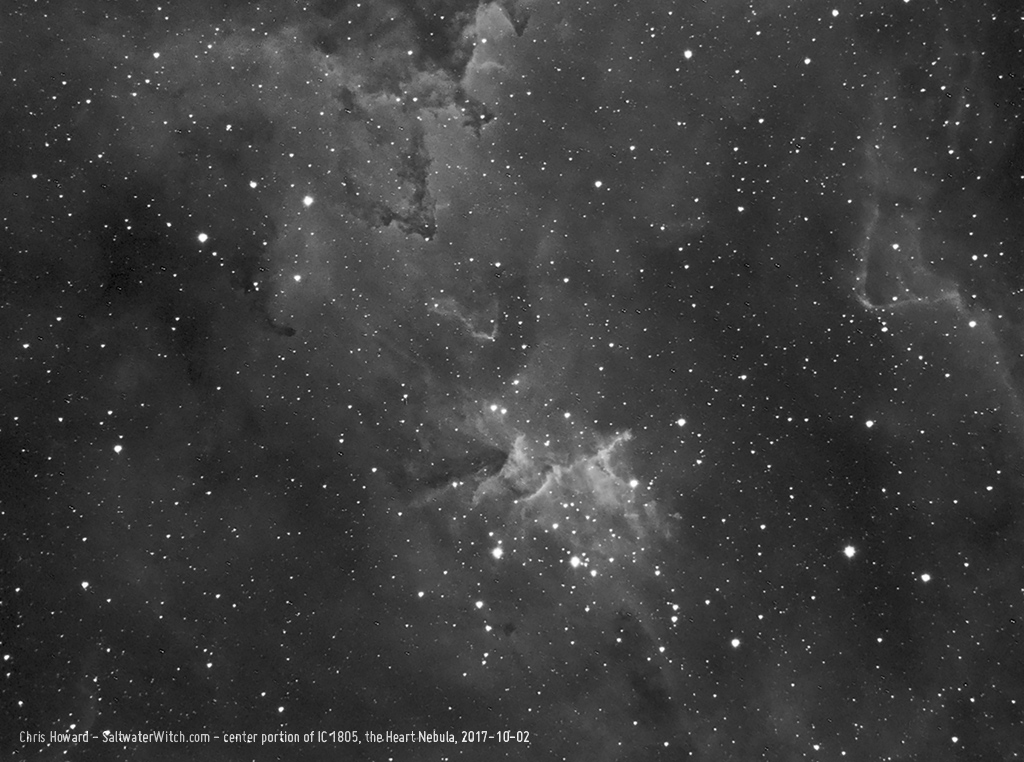
Posted October 2, 2017
Astro Setup - September 23, 2017
What the backyard looked like last night. Sort of an astronomy campout under the stars. It was a pretty clear night. I hope you had clear skies wherever you were last night! (Nikon D3100, 18mm, 13 sec. exp. ISO 1600 - I used my son's camera for these shots because mine was hooked up with the AstroTech scope)
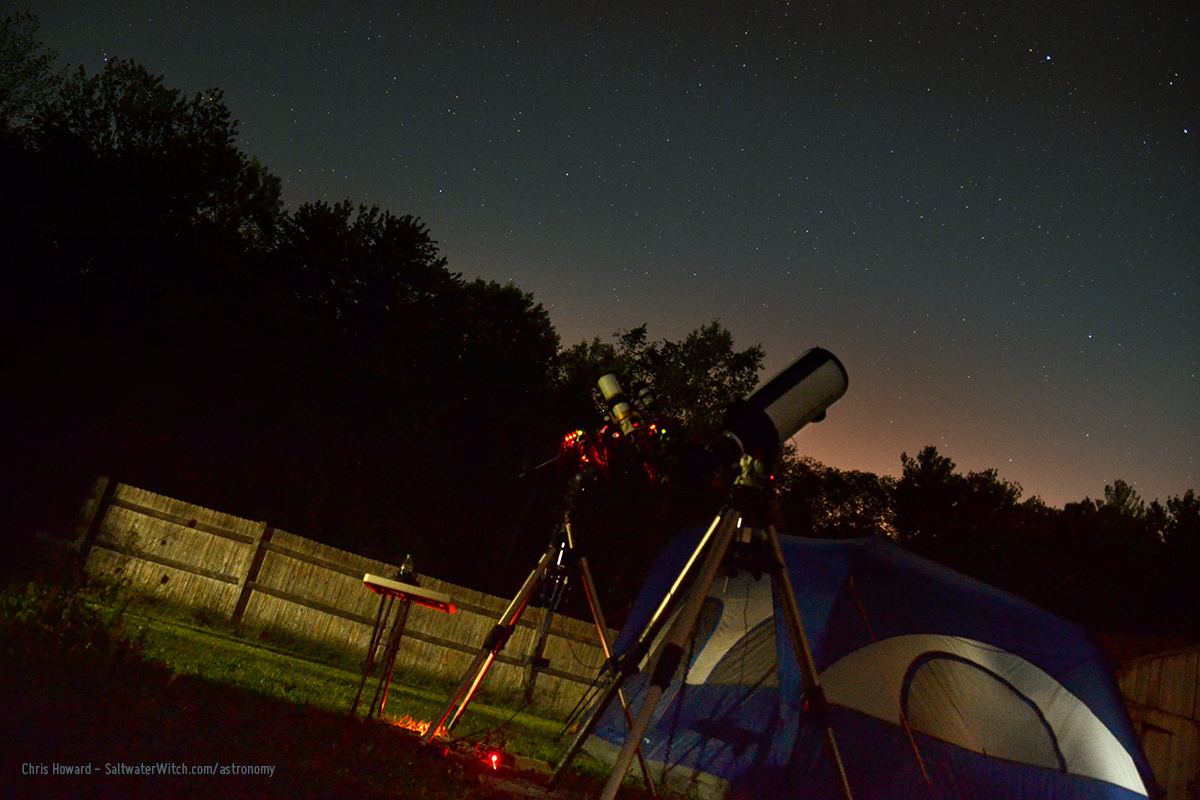
Here's one from last night's astro shoot: M42 - Orion Nebula (Yes, my favorite diffuse nebula). This time of year Orion doesn't start appearing over the horizon until the early morning hours. My Exposures started around 2am and ended around 5am. (Nikon D750, AstroTech AT6RC, William Optics field flattener/ 0.8x reducer; 162 light frames stacked in DSS, 140 dark frames).

And another shot from last Saturday night--of the Orion Nebula (M42) and De Mairan's Nebula (M43). This was the view from my other scope, William Optics GT-81 with the Atik 414EX monochrome CCD camera--which is just going to pick up a lot more of that good old ionized interstellar hydrogen.

